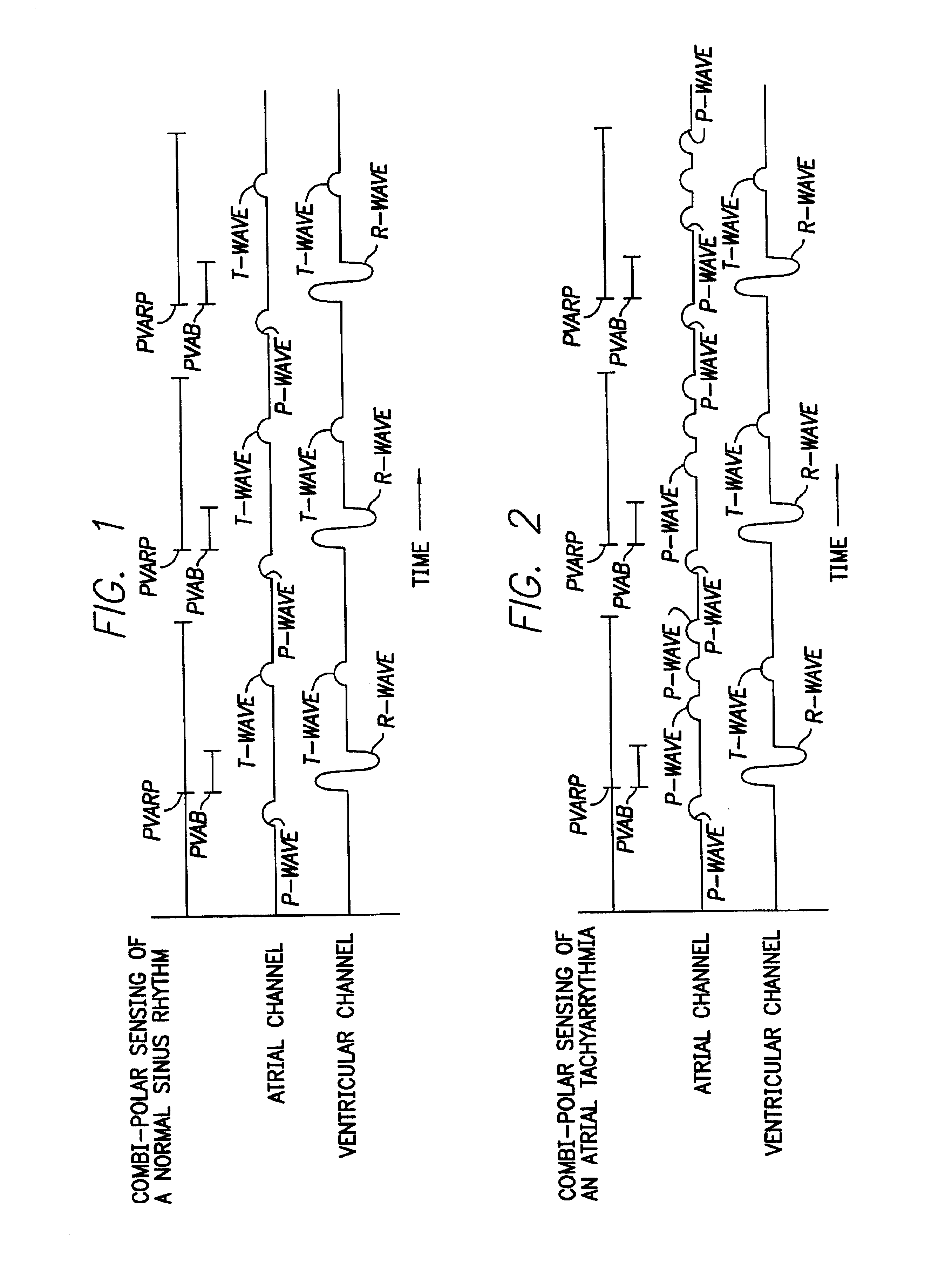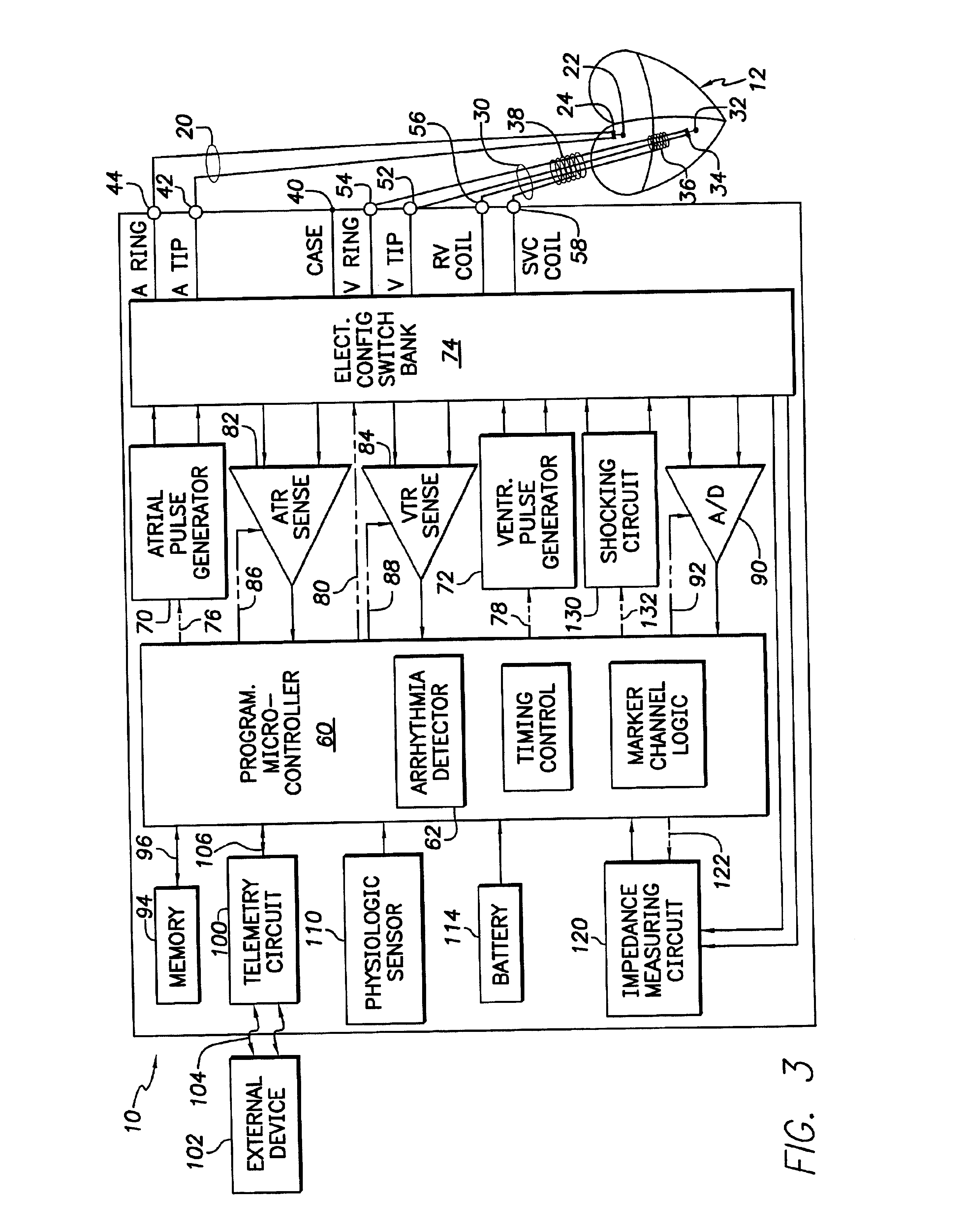Method and apparatus for blanking T-waves from combipolar atrial cardiac signals based on expected T-wave locations
a combipolar atrial and cardiac signal technology, applied in bioelectric signal measurement, medical science, therapy, etc., can solve the problems of less reliable, significant far-field electrical signals detected, and high cost of bipolar leads, and achieve the effect of correct determination of the true atrial ra
- Summary
- Abstract
- Description
- Claims
- Application Information
AI Technical Summary
Benefits of technology
Problems solved by technology
Method used
Image
Examples
Embodiment Construction
the system of FIG. 3 for blanking T-waves from an atrial channel cardiac signal based upon predetermined information identifying the location and duration of the T-wave relative to a preceding R-wave.
[0027]FIG. 5 is a graph illustrating exemplary atrial and ventricular channels of cardiac signals detected during a period of atrial tachyarrhythmia using combipolar sensing and specifically illustrating a T-wave blanking interval set to the expected location of T-waves within the cardiac signals.
[0028]FIG. 6 is a flow chart illustrating a method performed by the system of FIG. 3 for determining the expected location and duration of T-waves relative to R-waves for use by the method of FIG. 4.
[0029]FIG. 7 is a flow chart illustrating a state machine employed by a controller of the system of FIG. 3 for detecting R-waves, then blanking T-waves in accordance with the general method illustrated in FIG. 2.
DETAILED DESCRIPTION OF THE INVENTION
[0030]The following description is of the best mode...
PUM
 Login to View More
Login to View More Abstract
Description
Claims
Application Information
 Login to View More
Login to View More - R&D
- Intellectual Property
- Life Sciences
- Materials
- Tech Scout
- Unparalleled Data Quality
- Higher Quality Content
- 60% Fewer Hallucinations
Browse by: Latest US Patents, China's latest patents, Technical Efficacy Thesaurus, Application Domain, Technology Topic, Popular Technical Reports.
© 2025 PatSnap. All rights reserved.Legal|Privacy policy|Modern Slavery Act Transparency Statement|Sitemap|About US| Contact US: help@patsnap.com



